TOKENS OF A PLASTIC WILD (2020 - ongoing series)
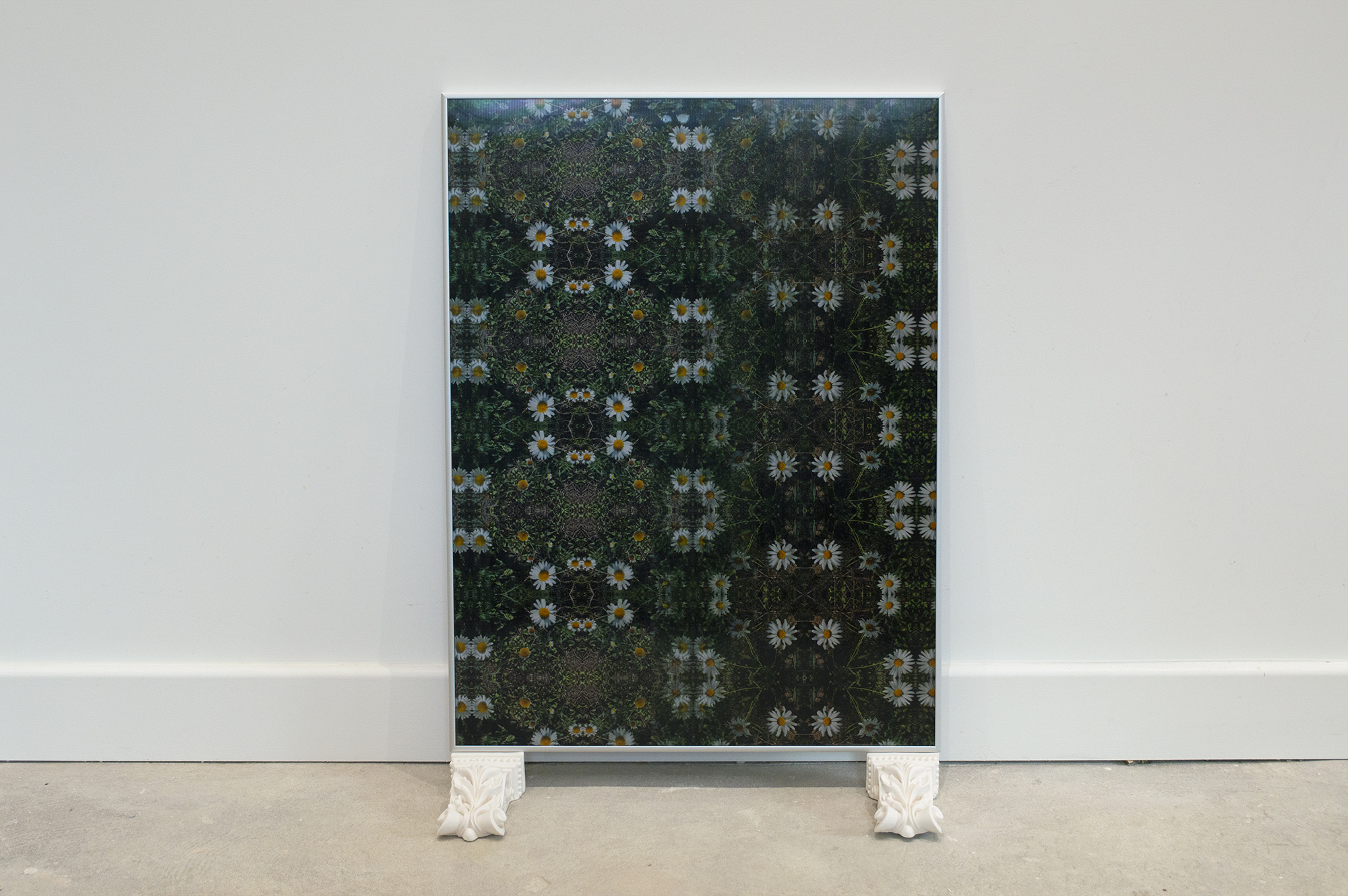
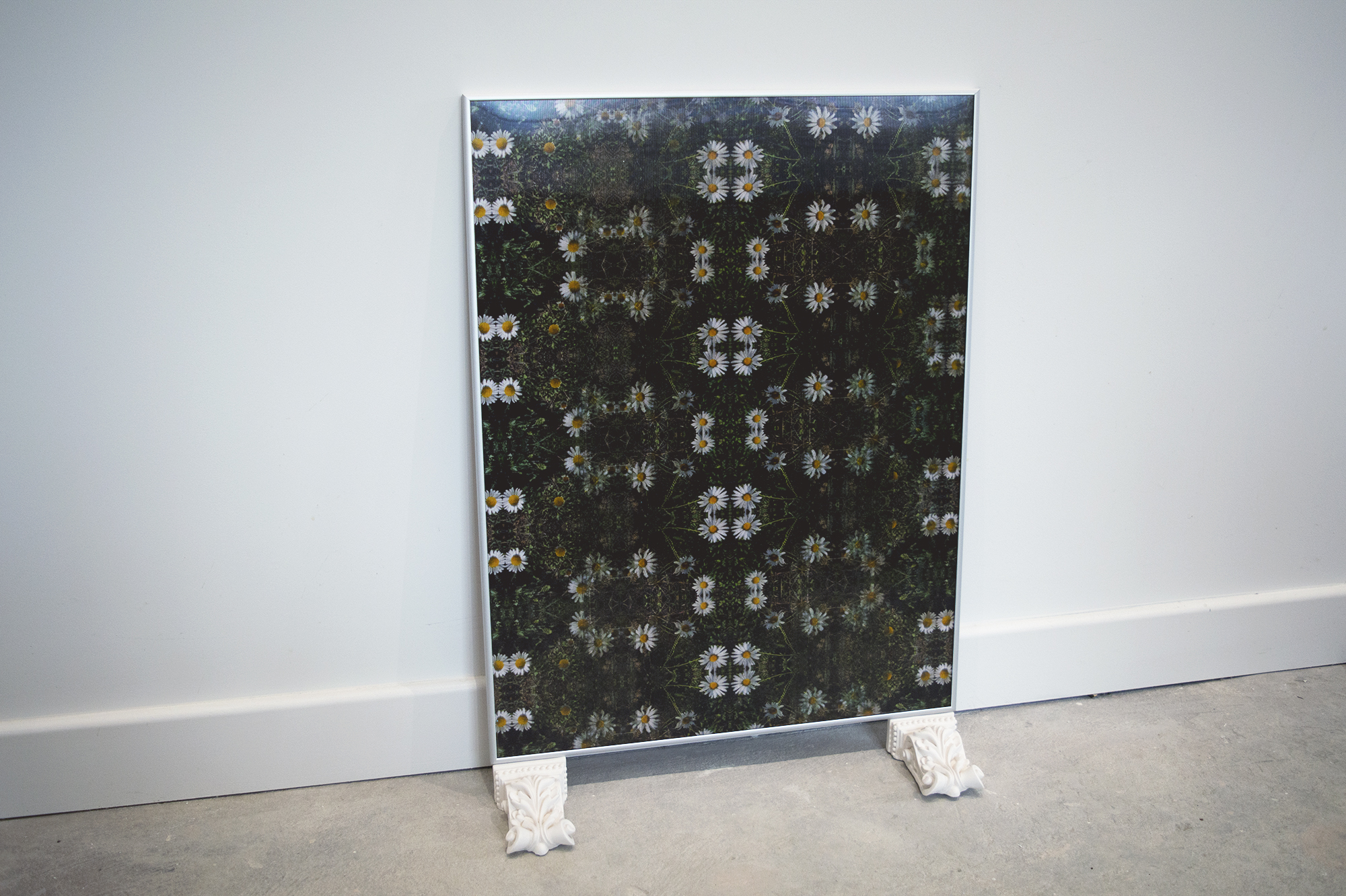

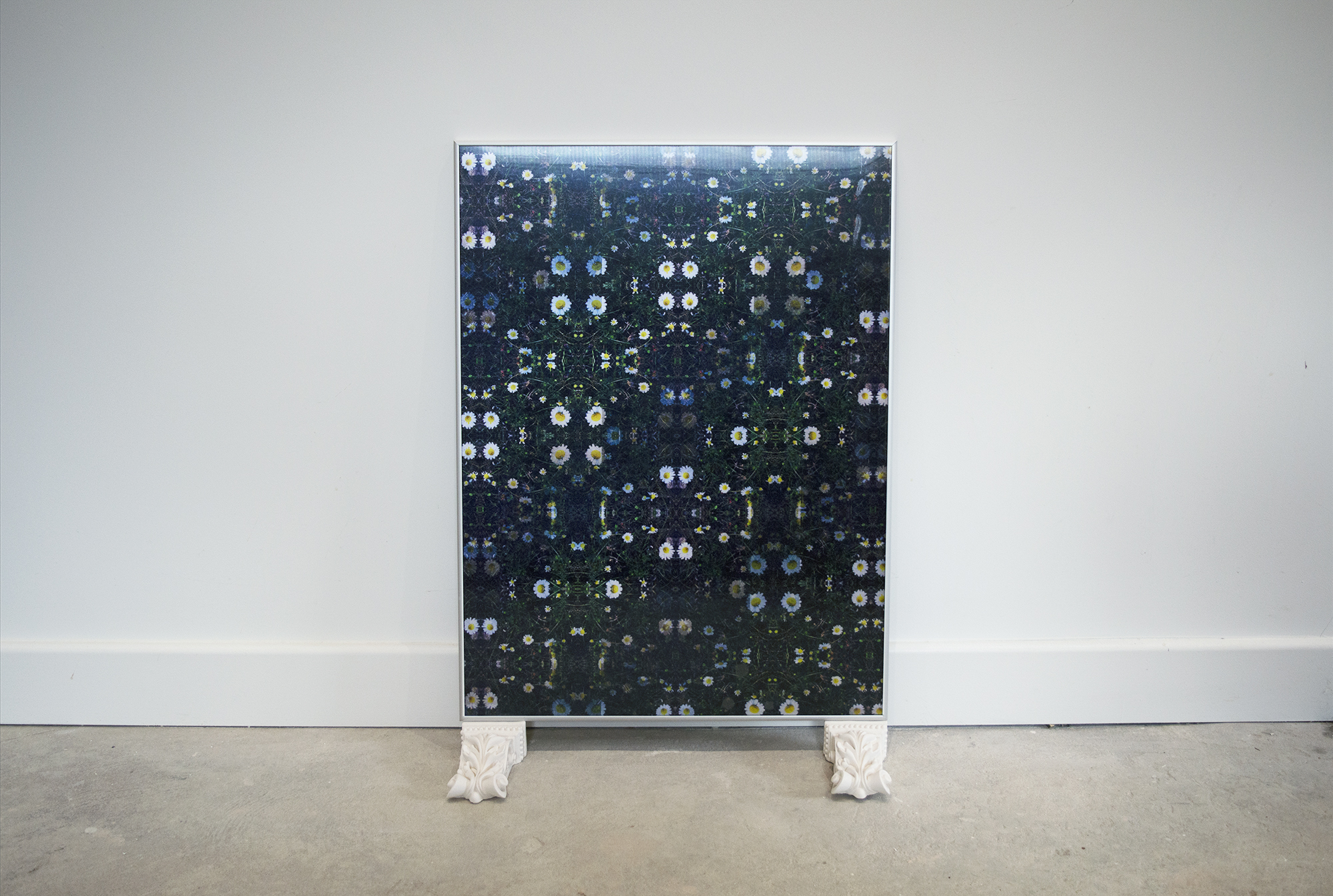


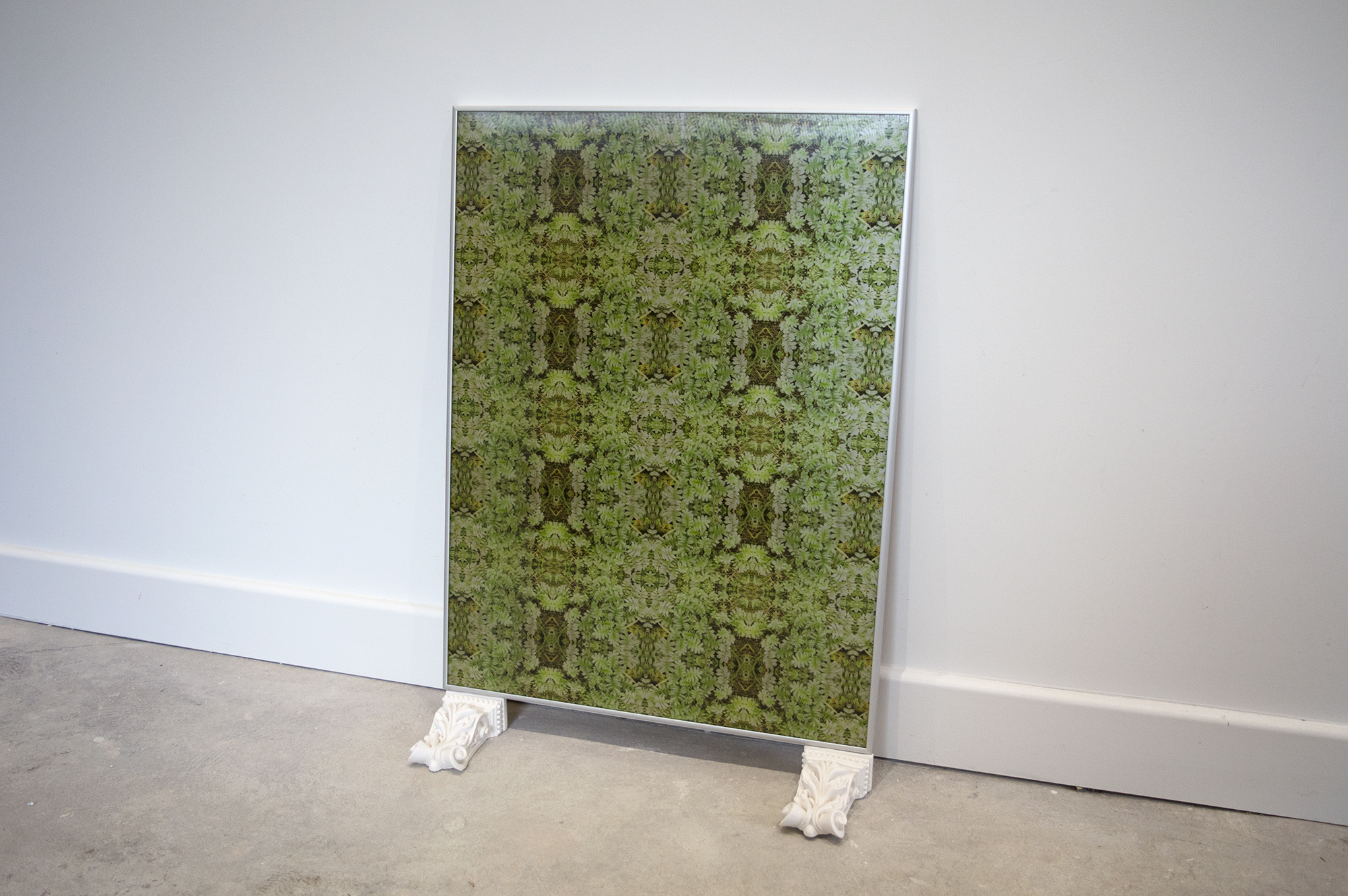
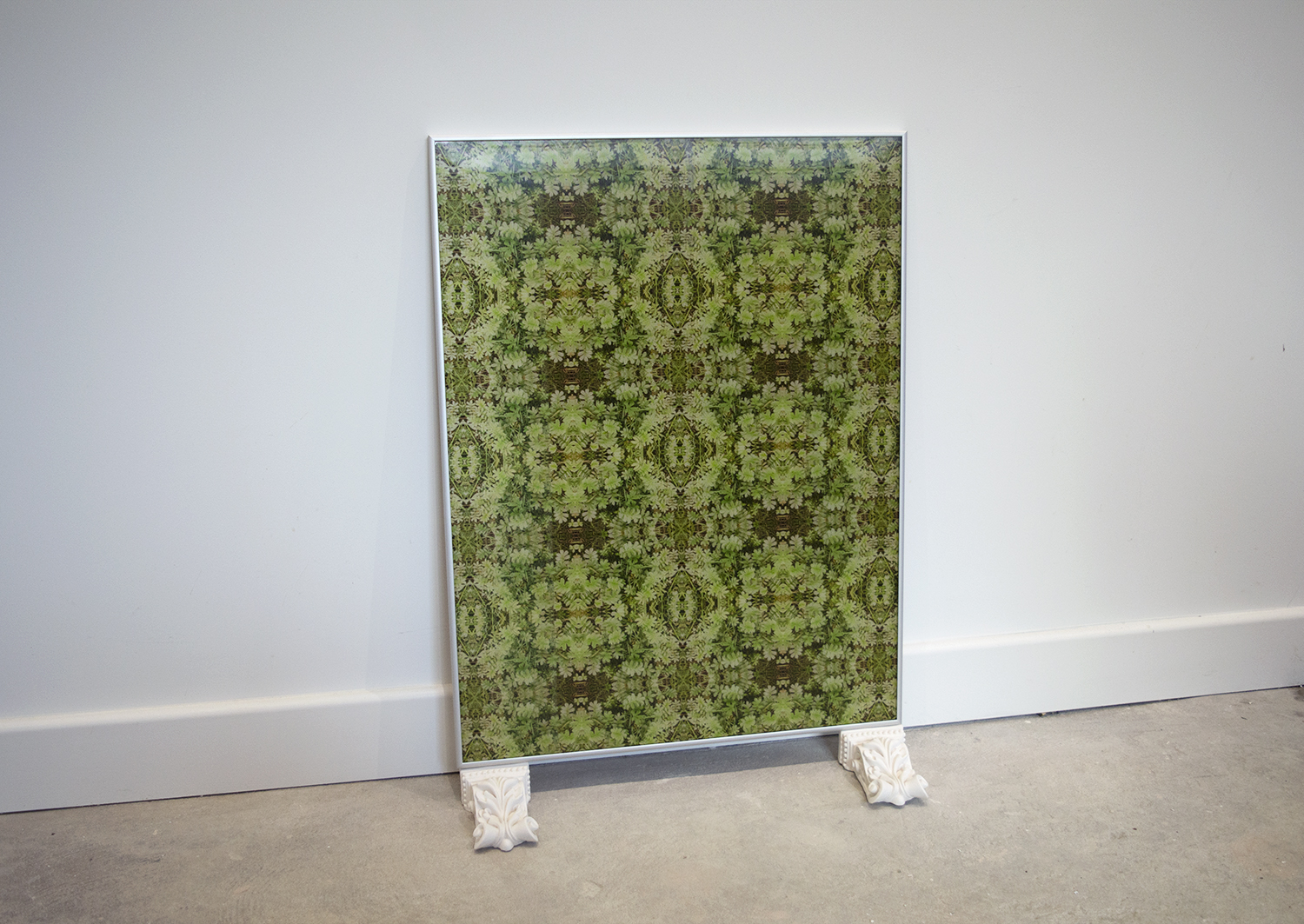
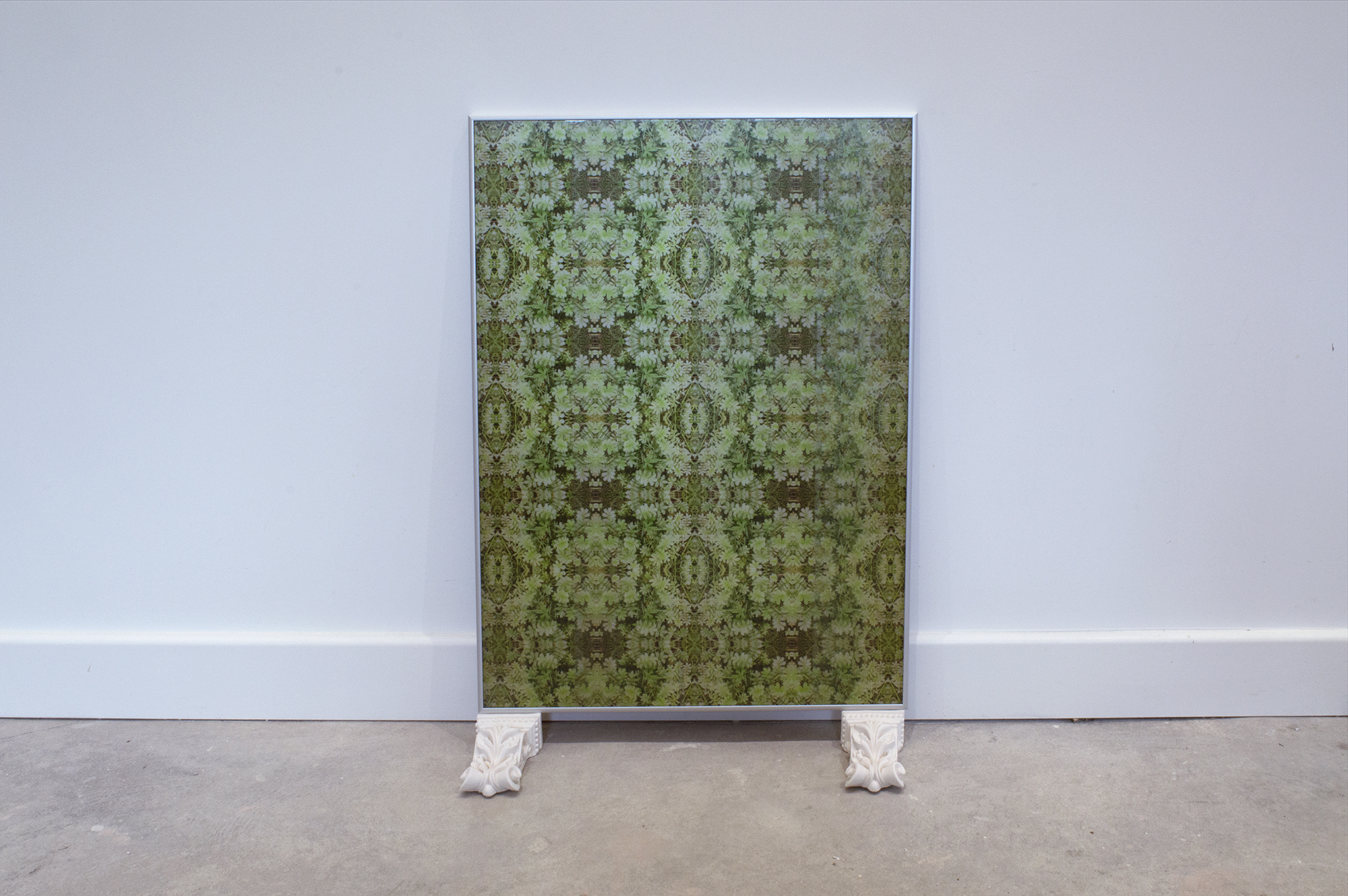
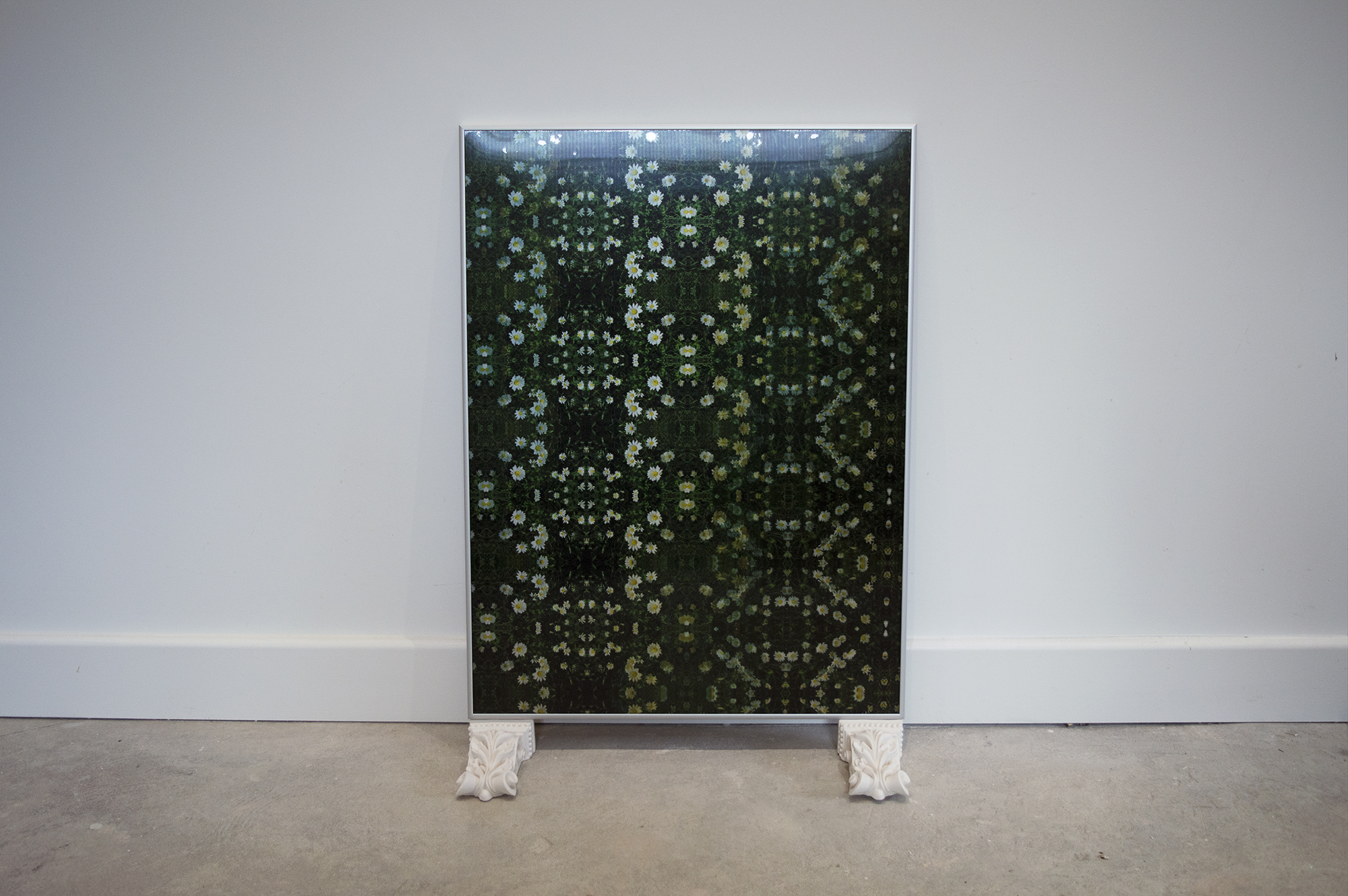
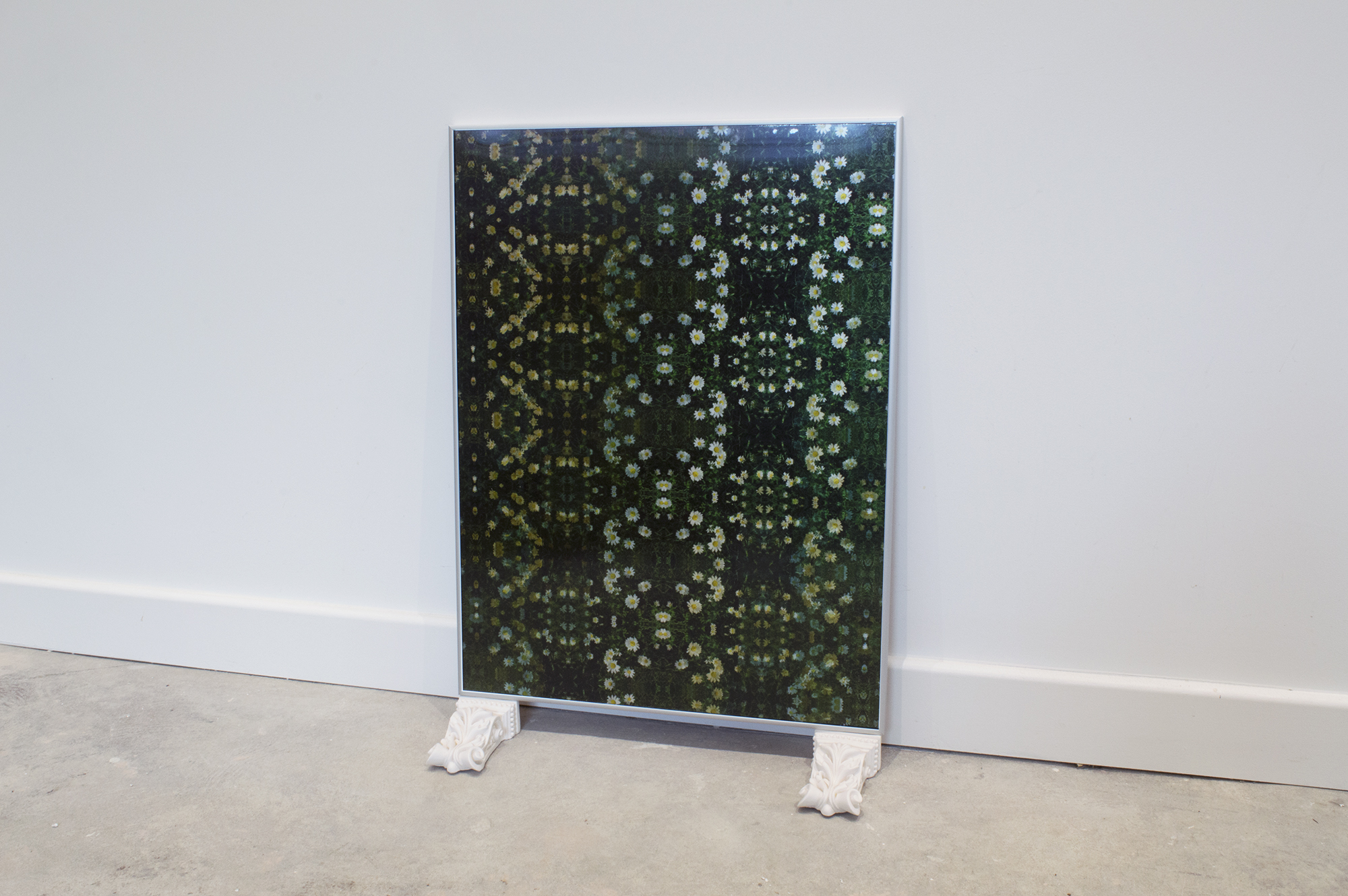

Clockwise from top left: Oxyeye daisy, True daisy, True daisy, Silverweed trefoil. Digital C-type, lenticular flip lens, prefabricated plaster Acanthus corbels, brushed aluminium frame. 18x24 in.
Images of wild plants, captured on an iPhone are digitally reconfigured and manipulated to create a kaleidoscopic floral fabric. Like wild souvenirs - reappropriated from their location within a messy Sussex plantscape - they appear as highly produced aesthetically desirable monocultures for consumption.
The animation of the plants is achieved through the interlacing of two sets of images, which when viewed through the lenticular flip lens, glitches between two patterns.
The use of lenticular refers to a commodified gift shop aesthetic, most commonly found on the cheap merchandise at the gift shop. Yet as a simple analogue technology it provides the mechanism through which to experience the glitching patterns whilst revealing its own limitations in achieving optical trickery.
The individual images, taken quickly on an iPhone, are unremarkable in themselves, but repeated on mass they resemble an exotic carpet with the pattern repeat retaining the dimensions of my screen. The repeating pattern recontextualises the plants in a highly idealised and controlled monoculture, referencing Elizabethan garden and textile design and the imposition of control over nature, as well as the furious collection of natural objects and wild plants notably during the 19th century.
These plants have been marked out as desirable: collected, appropriated and reproduced on mass for our enjoyment.